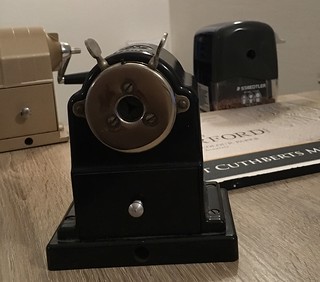
Most people who know me going way back online know me because I used to take photographs. In particular I used to take kitesurfing photographs on the beaches in Ireland, and occasionally elsewhere.
Five or six years ago, I completely lost my mojo, actually, it might have been longer. There were various reasons for this, although I think the main one was that I tended to have a lot of back ache which I put down to carrying the camera bag. Since December 2016, every single photograph I have taken has been with a Samsung phone, or once or twice, an iPad. I started drawing and painting. I didn’t miss carrying 25 kg of camera gear around with me. Even when I toned it down, the extra camera bag was always heavy, or awkward, and I had other stuff to carry. In truth, I’d done everything I could do with the kites and while I was planning to look at macro photography, I also packed up my life and moved to Luxembourg. For the first time in nearly 15 years, an SLR did not come with me. I did not seem to miss it.
I certainly did not miss the back pain, that was for sure. And I took some really sweet photographs with the camera on my phone, particularly of fireworks on National Day in Luxembourg. Then in December, I took photographs at a work do and discovered two things a) I still really liked taking photographs of people, and b) I still really liked processing photographs, in particular, choosing what to do with photographs. And that was when I discovered that the phone’s camera wasn’t enough. It struggled with white balance when lights were tinted. One of the things I had to clean up in a lot of photographs was a tango coloured cast. Because the phone image format was jpg, there was not a lot I could do. I wanted a RAW file.
I was not going to get that from my phone, and while I know there are a ew phones around which do have some sort of digital negative formats, I wasn’t sure I wanted to buy a phone just for its photo file format.

About 5 years ago, I had to put a photo book together for a family event and in the course of producing this, I located a lot of photographs of my dad and the rest of his clan when he was young. That was when he told me his mother had brought a Kodak Brownie from America when she came home to marry my grandfather and that she always had film in it.
This tied in to one of the reasons I liked having a camera in the phone. You always had something, at least, to catch a moment.
I like that idea but I wanted more than the phone could do for me. I know that mid level cameras are dying off because the phones are getting so good for a given value of people’s needs. I also knew I did not want to start another DSLR habit. I bought my 40D (my second one, actually) in 2009. Normally I had looked at updating it but I had the sense to realise I was using it so rarely it probably wasn’t worth my while to replace it. Photographers suffer from gear acquisition syndrome. I owned a lot of lenses; I needed to decide whether to stay EOS or whether to switch to Sony, or to look at the impact of going mirrorless. And all of that was still pointing at a steadily growing gizmo collection. I wanted something different. I wanted a compact camera that did raw that could live in my handbag. Always there, like my grandmother always had her Kodak Brownie.
So I bought a Canon Powershot G7X a couple of weeks ago. Events eventuated and I really only got a chance to play with it today.

A couple of things happened. It seems, for some reason, to be easier to pick the camera and go out, than it does for any other reason. It is a strange sort of company. Unlike drawing, I don’t need to find somewhere to work for an hour. I pull it out of my handbag, struggle with the controls but it’s there, and it is obvious to me that the way I look at the world is very different to the way I look at the world when I have a camera in my hand. The basics don’t change, and I can do Av, Tv, Manual, depending on what takes my fancy. I find that high ISO has improved beyond all recognition but then, let’s face it, ten years have passed. It would want to have.
I don’t remember missing the camera for the last 2 and a half years. I only know that when I had it with me today and I was out taking photographs, the world felt different to how it feels when I go out for any other reason. It’s easier to get lost in the moment.
A lot of the photographs I took in the past depended on serious zoom capabilities. I don’t have that any more. I want to live in a world where I use that camera, and work within its limitations. I have no doubt that at some point, I will get frustrated by the lack of 500mm.
But it has been fantastic to be back dealing with Adobe RAW and digital negatives. It is like a friend has come back.
